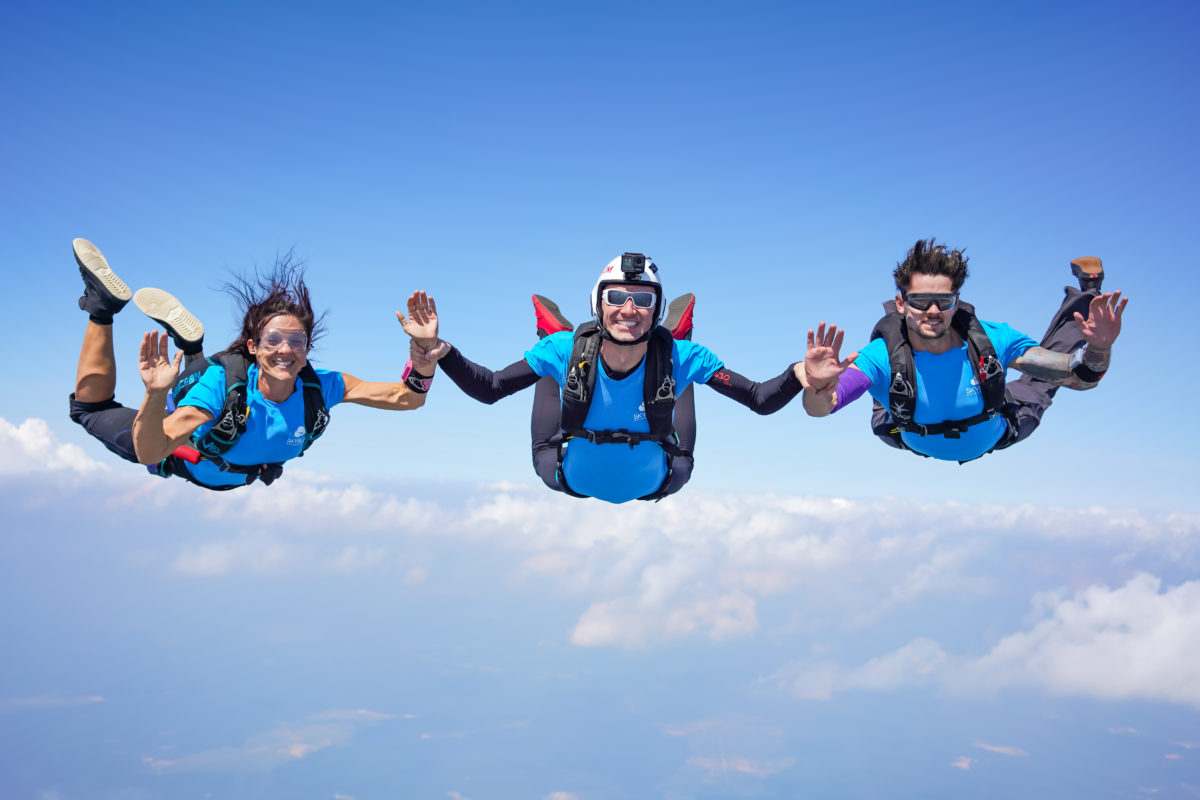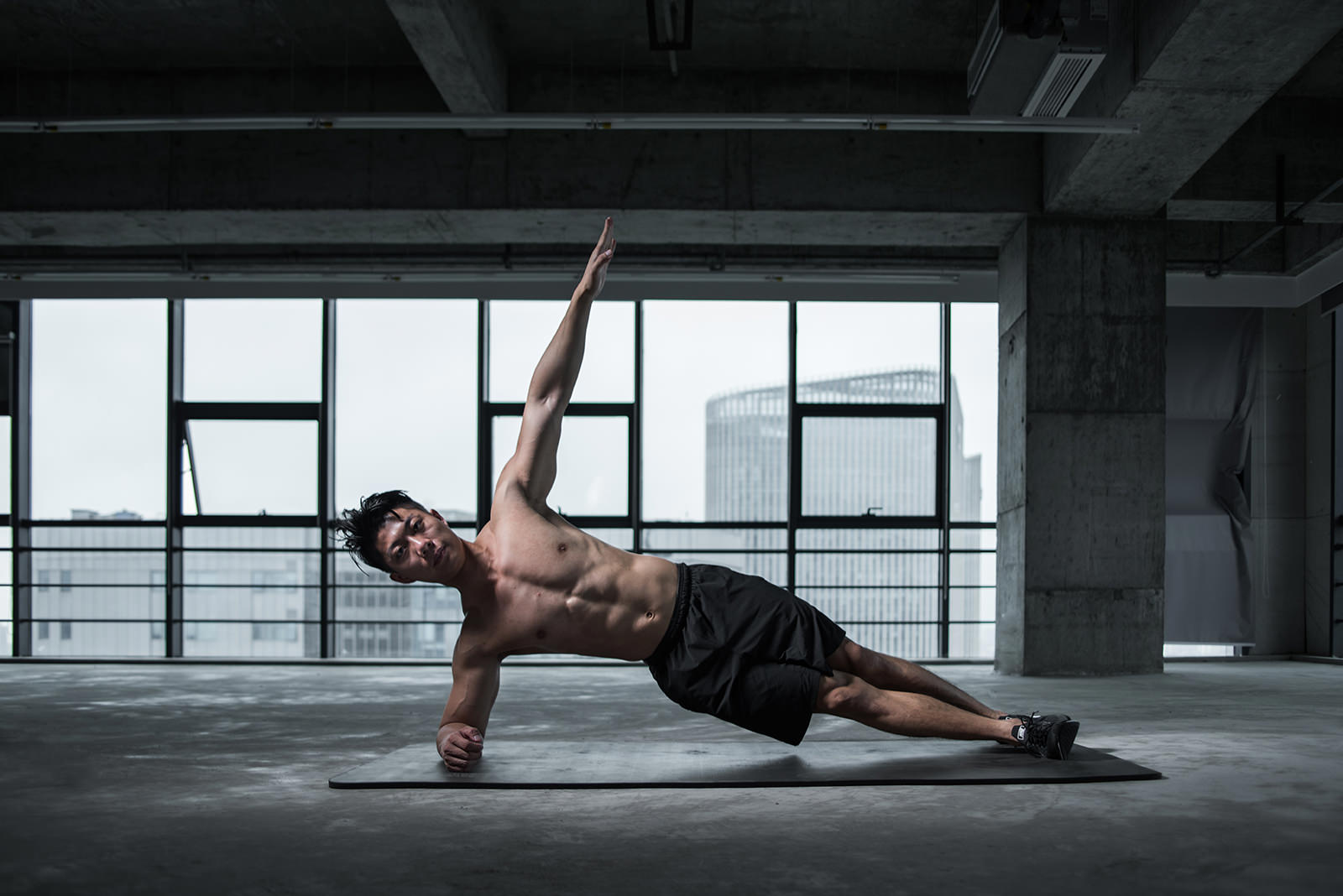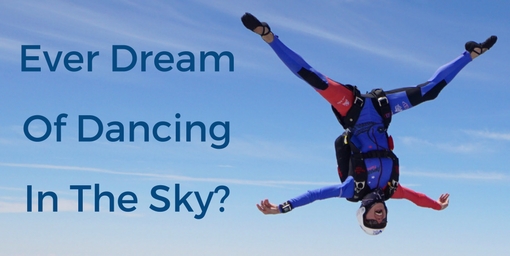A Look At The Muscles Skydiving Uses
Tuesday, February 25, 2020
- Team FlyXP
- 2/25/20
- 0
- General, Skydiving Training

You don’t need to be a super fit to learn how to fly your body – but as with a lot of things, a general level of health and wellbeing can considerably help your progression.
When you are new to it, the science of skydiving and tunnel flying appears complicated – and the combination of physical and mental demands placed upon you in an unfamiliar environment can lead to tension and result in fatigue and muscle soreness.
Here is a little look at the science of bodyflight and how to approach managing the stressed and sore muscles you may develop along the way.
Technique:
Why is it that you feel broken after a few sessions of learning to fly but your coach is doing it all day long without showing any signs of fatigue? The secret is a good technique.
The motion of a skydiver is about presenting the available surfaces of your body onto the wind and deflecting it to create the desired effect. Depending on what you are learning the amount of effort you need to apply changes. But, your muscles are generally able to put more effort into it than you actually need to hold the positions – creating inefficiency and fatigue.
Our training goal as flyers is learning to put the smallest amount of energy possible into achieving the correct result. Every improvement in your technique makes things a little easier on your muscles.
Core Strength:
Good flying requires subtlety of movement. Less is more. If you are working harder than you need to with your limbs then not only are your muscles burning more energy than necessary, all the subtlety that good flying requires is harder to find.

So much of bodyflight is about being strong through your center line that its importance cannot be overstated. Good core strength will not only help with fatigue and muscle soreness, but it will also improve your overall connection to the wind. Here are some handy exercises you can put into action to get your core and overall body in better shape for skydiving.
Drills:
When you first see really good flyers it appears as if they have magical powers. How do they do all this stuff so effortlessly and accurately? The key is drilling the pieces.
Complex sequences and positions are best learned by isolating different elements, performing drills to understand that particular component – then gradually assembling the pieces together into the various flying styles.
Working the required drills is tiring and can create soreness in your muscles. This is because from the beginning you will be using exaggerated movements and a variety of wind speeds to help you understand exactly what is happening to the surfaces you are using. This is all done in the name of good technique. Understanding the pieces is understanding the whole thing.
Mixing Things Up:
Flying each of the main orientations requires a different combination of muscles. Hammering away at a single thing past the point where muscle soreness and fatigue have won out quickly becomes very inefficient as you get too tired to hold the correct shapes. The best way is to train with structure and purpose, always keeping in mind that not only does mixed training with opposing muscle groups to allow for rest and recovery – but also that doing so will strengthen your flying more evenly.
The very best flyers and coaches understand that good skills are built on a good even foundation, and that all the elements of bodyflight are linked together right from the start.
Exercise:
Tunnel flying has a peculiar aspect to its fitness – the better you get at it the less energy you expend getting it done. However, getting there can be physically challenging and preparing yourself properly will help you along the way.
- Stretching is great. Everyone should do it every day. It is particularly important on a flying day as it will help you avoid fatigue and sore muscle after skydiving, and make sure you are warmed up and ready to go on minute one.
- Swimming is perfect. Flying uses your whole body in much the same way as swimming, and as such getting in the pool before or after flying is second-to-none for caring for your muscles.
- Core exercises will help. As stated above you will be using your core a lot. Work it out!
- Balance and awareness will push you forwards. Any other activities you do that involve body awareness and balance will aid in your overall understanding of the motion of a skydiver. Surfing, skating, climbing, diving, martial arts, dancing are all things that translate well.
Conclusion:
Hopefully, this gives you a little window into the effects that skydiving is pretty much a science at this point. The best results all come down to good coaching. A quality coach will design and develop a program to help you progress at the best rate and constantly adjust things as you train to keep you always pushing forwards, considering all the things above and more. Here at XP, we have some of the most experienced flyers and coaches in the world to get you where you need to be. Contact us to get started.
Copyright © 2024, Skydive Paraclete XP, All Rights Reserved.
DropZone Web Design & Marketing by Beyond Marketing, LLC
